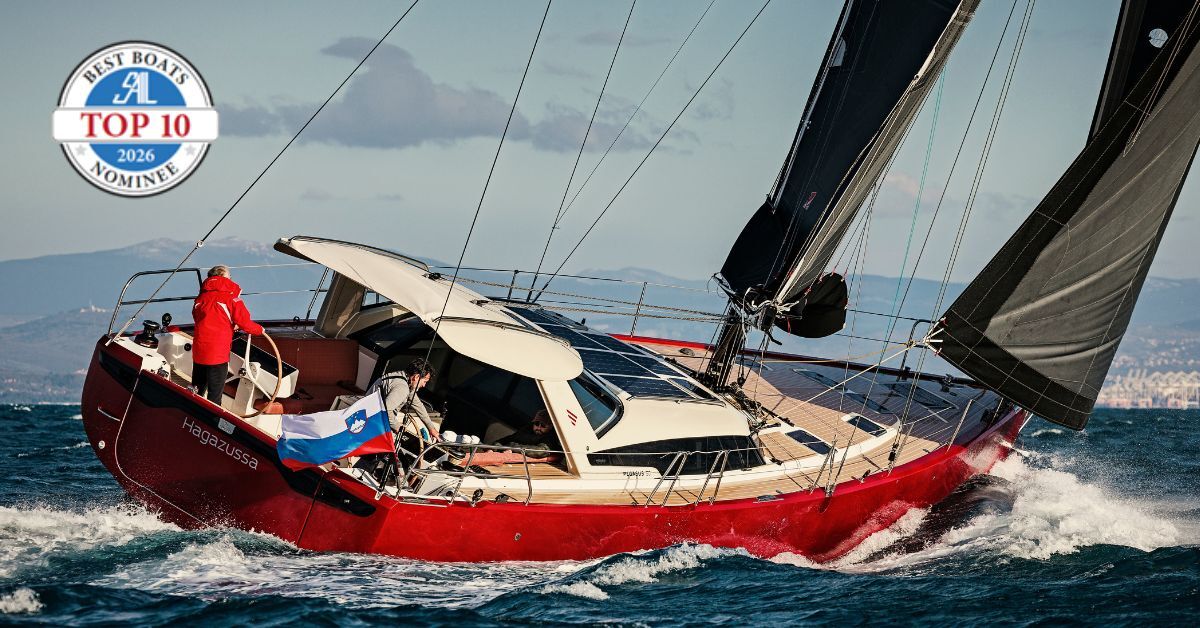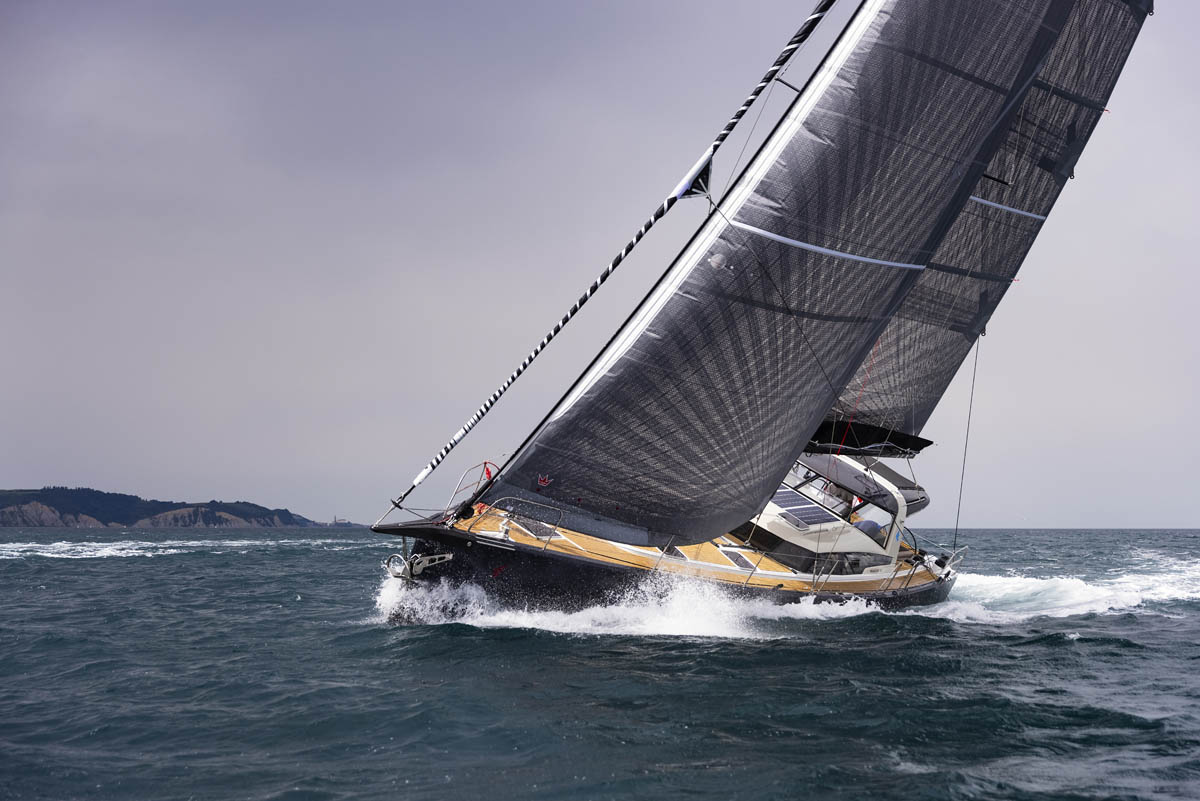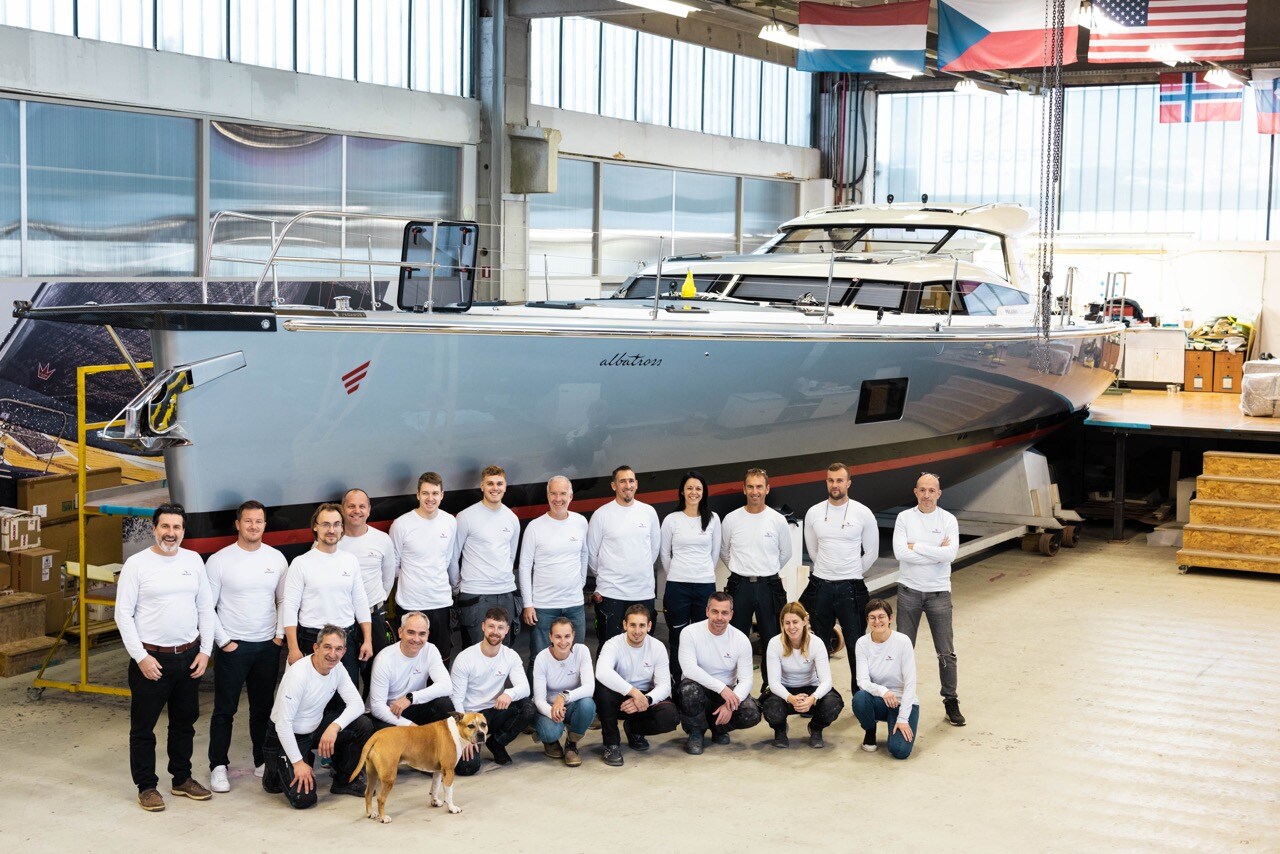Shorthanded by design: Pegasus 50 & 67
Designed for easy, confident handling with a small crew on board, the Pegasus 50 and 67 bring racing-inspired technology and cruising comfort together. Whether you're cruising as a couple or simply want the reassurance of full control from the cockpit, the Pegasus boats prove that shorthanded sailing can be safe and effortless.
Importance of shorthanded capability
Reefing, changing sails and carrying out other manoeuvres single-handed is not just essential for those who sail solo, or as a couple. Even the most reliable crew members can fall ill or drop out unexpectedly, making the ability to operate a boat alone or double-handed a vital for any crew.
The ability to easily operate alone or double-handed is therefore an important reassurance even for those who plan to sail with at least two or three others on board. The Pegasus 50 has everything needed to handle the boat in the cockpit (and so will the new Pegasus 67), making this an easy boat to sail even with only one person on watch.
As with many other aspects of the design, the thinking behind this was baked into the original concept. It leans heavily on technology and techniques developed for Class 40 and IMOCA 60 fleets, but uses electric winches for sheets, halyards, reefing and furling lines.
Flexible, ready-to-use sail plan
Four sails can be hoisted, furled and left ready for use forward of the mast: a big asymmetric spinnaker, a code zero, the J1 headsail and a smaller J2 jib. This creates an immensely flexible arrangement with multiple sails covering a full range of wind strengths and angles ready for use, with all sheets and furling lines running back to the cockpit.
Simple and safe sail changes
The set up makes every evolution a simple one, following a clear process: turn downwind to reduce the apparent breeze, unfurl the new sail, furl the old one, then head back onto course. The procedure is the same even if the boat becomes overpowered in a rising wind as lightweight yachts that plane easily sail at relatively hot wind angles to generate apparent wind, even if their destination lies directly downwind. Bearing away onto a more downwind course massively reduces apparent wind speed, creating a dramatic calming effect.


Efficient line management with minimal deck work
All lines, including halyards, mainsail luff and leech reefing pennants, plus furling lines for the J1 headsail, J2, code zero and gennaker, are all led aft to clutches and stoppers near the four identical electric winches at the helm stations.
“There is really no need to go forward and walk on the deck,” Pegasus Yachts co-founder Miha Breskvar points out. “The only time it’s necessary is to hoist the J2, code zero or asymmetric gennaker. And all these are furling sails that can be left hoisted when not in use, unless you’re sailing upwind in 30 knots, when it’s prudent to take the code zero and spinnaker down.”
Winches are positioned for easy cross-winching, allowing sail trim to be tweaked easily from the windward side of the boat. Positioning the mainsheet on top of the arch is a big boost to safety and reliability in manoeuvres, as it can’t flail around the cockpit, yet the ability to achieve accurate sail trim is not compromised.
A few owners have opted for a mainsheet traveller on the arch. “The process of sail trim is a little bit different to how you would trim the mainsail with a traveller,” says Miha, “but it’s easy when you get used to it and is a solution that offers many advantages.”



